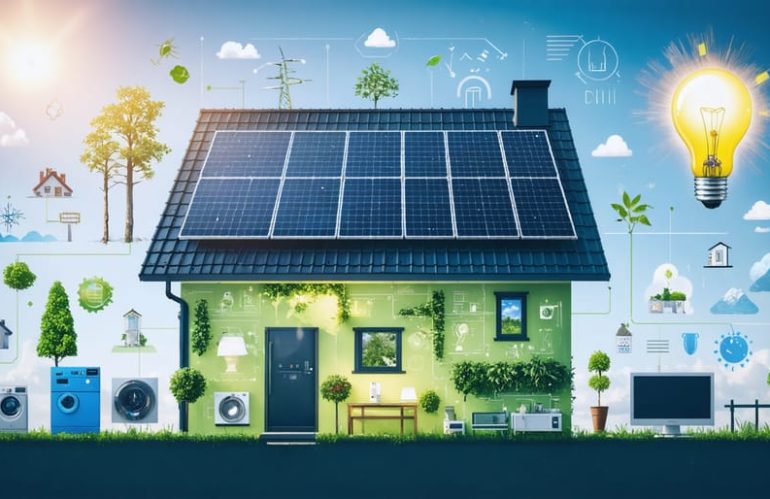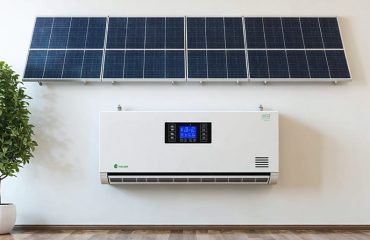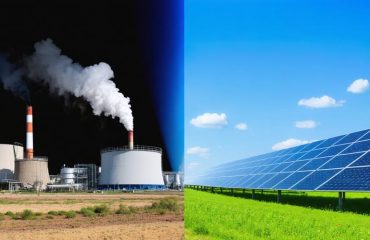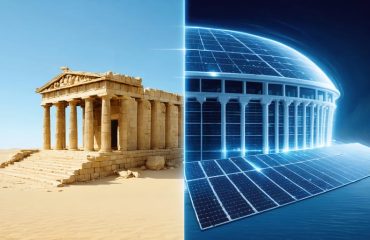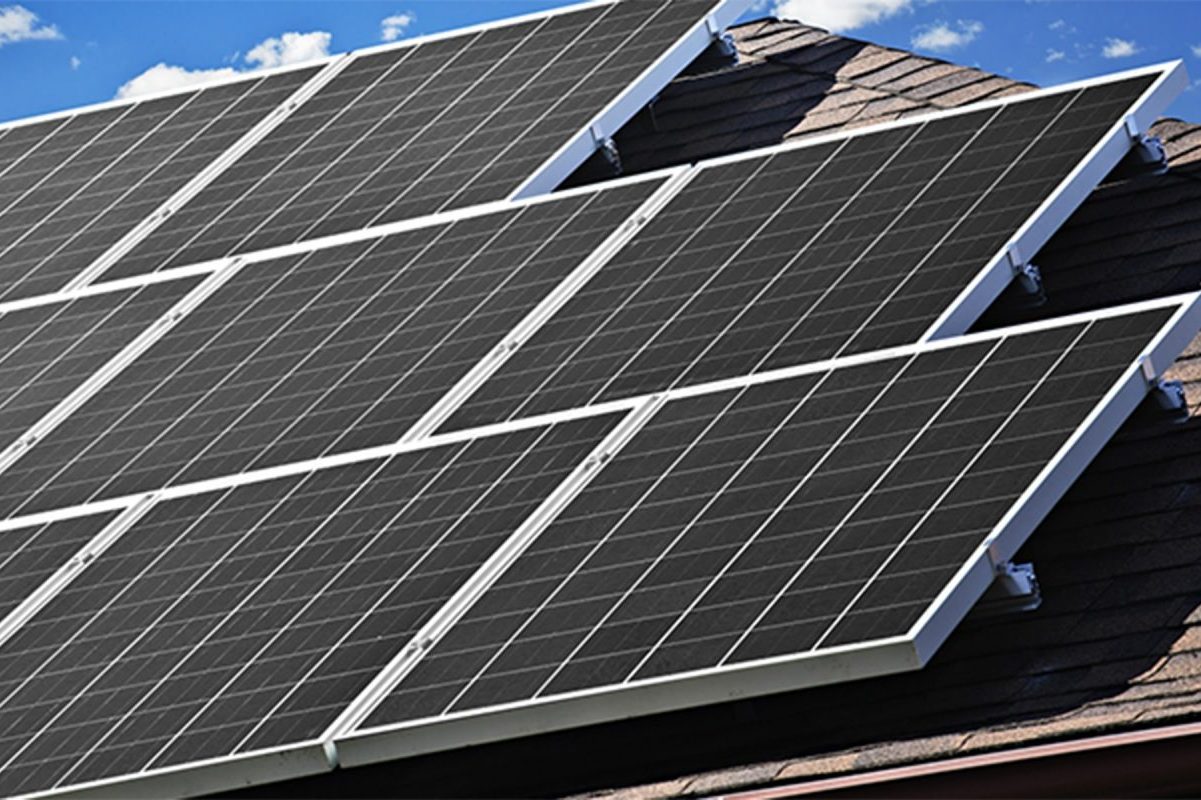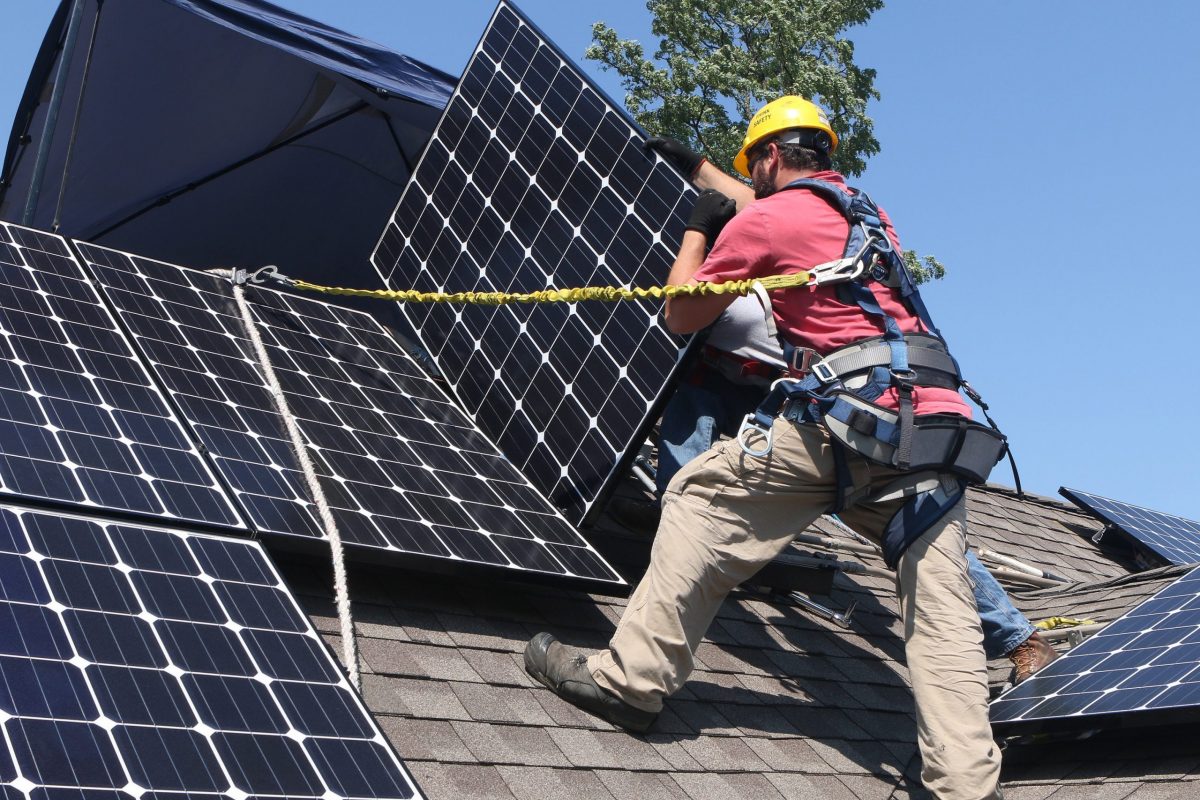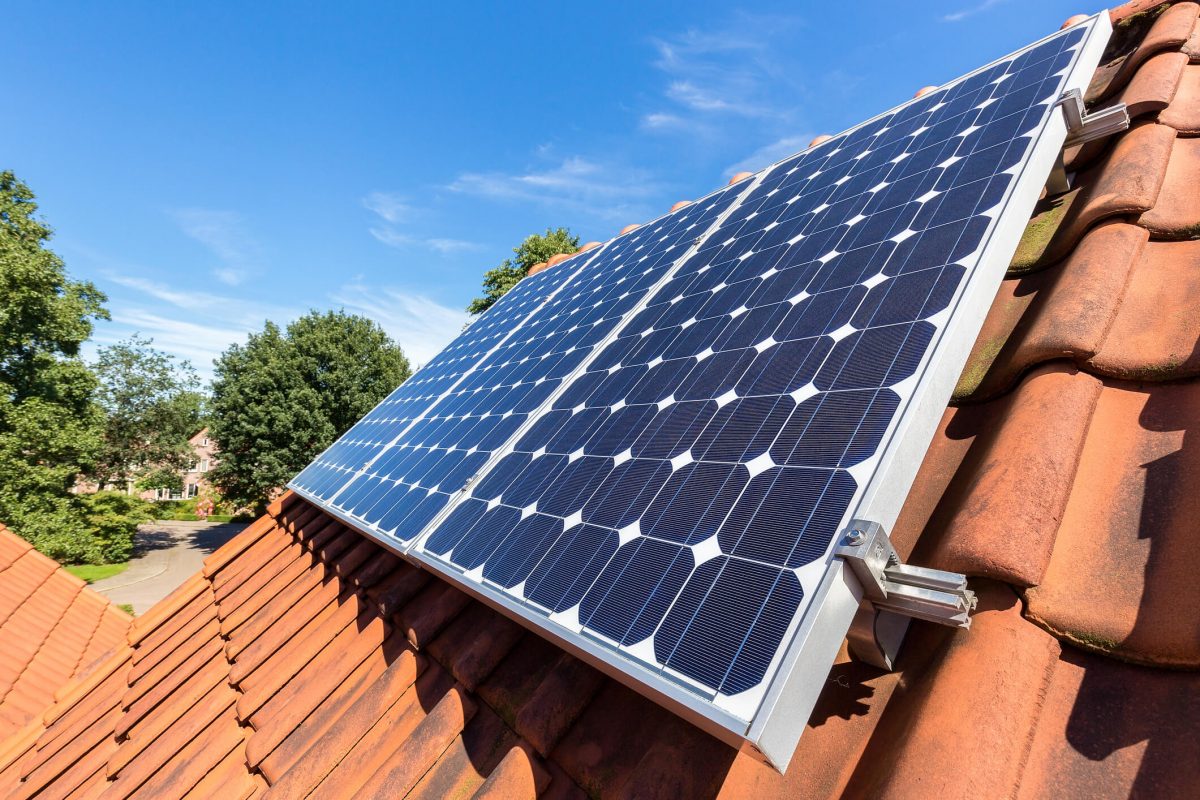Transform your home into an energy-efficient powerhouse while maximizing your solar investment through strategic improvements that deliver immediate savings. Modern homeowners slash up to 40% off their energy bills by combining smart upgrades with solar technology, creating a comprehensive approach to sustainable living.
Start with high-impact fundamentals: seal air leaks around windows and doors, upgrade to LED lighting throughout your home, and install a programmable smart thermostat to optimize heating and cooling cycles. These foundational improvements create the perfect baseline for solar panel efficiency, ensuring every captured watt delivers maximum value.
Beyond basic weatherization, strategic upgrades like adding attic insulation, installing energy-efficient windows, and upgrading to ENERGY STAR appliances work in harmony with solar systems to dramatically reduce your home’s energy requirements. Smart home technology further enhances these improvements by providing real-time energy consumption data, allowing you to fine-tune your usage patterns for optimal efficiency.
With energy costs continuing to rise, these improvements offer both immediate savings and long-term value, typically paying for themselves within 3-5 years while increasing your home’s market value by an average of 4-10%.
Pre-Solar Energy Efficiency Essentials
Insulation and Air Sealing
Proper insulation and air sealing are foundational elements of an energy-efficient home, working together to maintain comfortable indoor temperatures and reduce energy waste. Start by conducting a thorough home energy audit to identify areas where heat escapes during winter or enters during summer.
Focus first on your attic, as this is where most homes lose significant heating and cooling. Add or upgrade insulation to reach the recommended R-value for your climate zone, typically between R-30 and R-60. Don’t forget to insulate the attic access door and seal any gaps around pipes or vents.
Wall insulation is equally important. If your walls aren’t properly insulated, consider blown-in cellulose or foam insulation, which can be added without major renovation. Basement and crawl space insulation helps prevent heat loss through the foundation and keeps floors warmer during winter months.
Air sealing goes hand-in-hand with insulation. Use caulk and weatherstripping to seal gaps around windows, doors, and other openings. Pay special attention to areas where different building materials meet, such as where walls join the foundation or roof. Don’t overlook smaller openings around electrical outlets, light switches, and plumbing penetrations – these small gaps add up to significant energy loss.
Modern insulation materials and techniques can reduce your heating and cooling costs by up to 15%, making this improvement a smart investment for both comfort and energy savings.
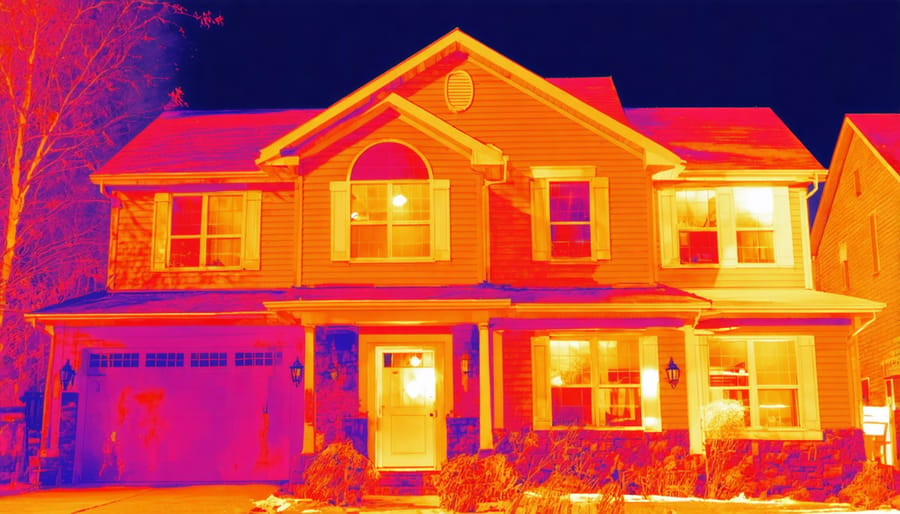
Window and Door Upgrades
Windows and doors can account for up to 30% of your home’s heat loss, making them crucial targets for energy efficiency improvements. Modern energy-efficient windows feature double or triple-pane glass filled with insulating gas, and low-emissivity (Low-E) coatings that reflect heat while allowing natural light to pass through. These features work together to maintain comfortable indoor temperatures year-round while reducing your heating and cooling costs.
When selecting new windows, look for ENERGY STAR certified products with a low U-factor (indicating better insulation) and an appropriate Solar Heat Gain Coefficient (SHGC) for your climate. For doors, consider models with built-in insulation cores and weather-stripping to prevent drafts.
Even if replacement isn’t in your budget, there are cost-effective ways to improve existing windows and doors. Installing weatherstripping, caulking gaps, and adding window films can significantly reduce energy loss. Storm doors and windows provide an additional layer of insulation and protection against the elements.
For maximum benefit, ensure professional installation by certified contractors who understand proper sealing techniques. Well-installed windows and doors not only improve energy efficiency but also enhance your home’s comfort, reduce outside noise, and increase property value. When combined with other energy-saving measures, these upgrades can significantly lower your monthly energy bills while making your home more comfortable and environmentally friendly.
Smart Home Integration for Solar Optimization
Smart Thermostats and Energy Monitoring
Smart thermostats represent a significant leap forward in home energy management, offering both convenience and substantial energy savings. These intelligent devices learn your temperature preferences and daily routines, automatically adjusting your home’s climate control for optimal efficiency. Many models can detect when you’re away and adjust accordingly, ensuring you’re not heating or cooling an empty house.
The real power of smart thermostats lies in their data collection and analysis capabilities. Through user-friendly apps, you can track your energy usage patterns, receive personalized recommendations, and even get alerts when your HVAC system needs maintenance. Some advanced models can integrate with local weather forecasts to optimize heating and cooling cycles, potentially reducing energy consumption by 10-15% annually.
Energy monitoring systems take this efficiency a step further by providing real-time insights into your home’s electricity usage. These systems can identify energy-hungry appliances and suggest optimal times for running them, especially helpful for homes with time-of-use electricity rates. Many monitors can break down energy usage by device, helping you spot unnecessary power draws and phantom loads.
When paired with your home’s solar system, smart thermostats and energy monitors become even more valuable. They can help you maximize self-consumption of solar power by running high-energy appliances during peak solar production hours. Some systems even integrate with battery storage, ensuring stored solar energy is used efficiently during evening hours or cloudy days.
For the best results, look for devices that offer smartphone integration, energy usage reports, and compatibility with other smart home systems. Most importantly, choose products that match your lifestyle and comfort with technology – even basic smart thermostats can deliver significant energy savings when used consistently.
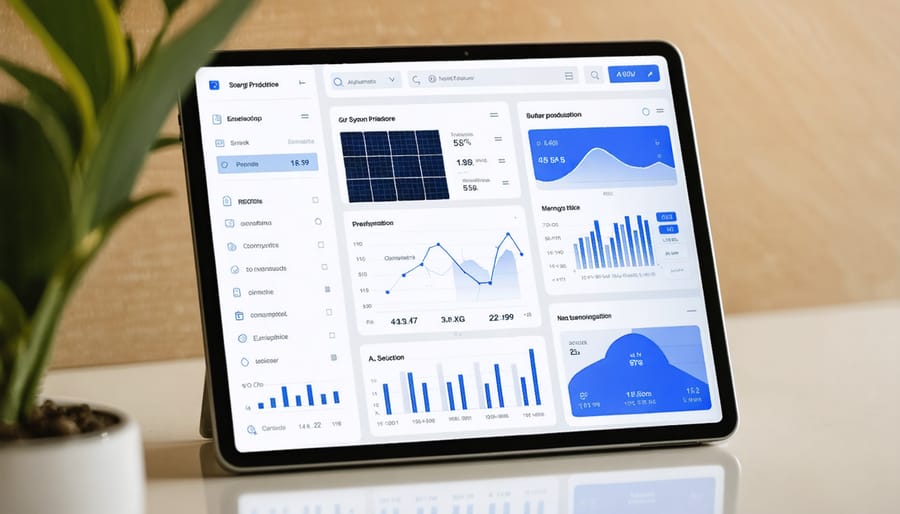
Automated Energy Management Systems
Integrating your solar power system with smart home automation creates a powerful synergy that maximizes energy efficiency while simplifying daily operations. Modern automated energy management systems can analyze your energy consumption patterns, weather forecasts, and latest solar technology advances to optimize your home’s energy usage automatically.
These smart systems can automatically adjust your thermostat, operate appliances during peak solar production hours, and even control smart blinds to maximize natural heating and cooling. For example, your system might run your dishwasher during sunny afternoon hours when solar production is highest, or automatically adjust your HVAC settings based on real-time weather data.
Many modern energy management platforms offer user-friendly smartphone apps that provide real-time monitoring of both energy production and consumption. This visibility helps you make informed decisions about your energy usage while allowing remote control of connected devices. You can track your solar panel performance, battery storage levels, and overall energy savings from anywhere.
The integration can also include automated battery management, ensuring your home storage system charges during optimal solar production periods and discharges during peak utility rate hours. Some systems even incorporate predictive analytics to anticipate your energy needs based on historical usage patterns and weather forecasts.
While the initial setup requires some investment, automated energy management systems typically pay for themselves through increased energy savings and more efficient use of your solar power system. Many homeowners report energy savings of 20-30% after implementing these smart solutions, making them an excellent addition to any solar-powered home.
High-Impact Energy Efficiency Upgrades
LED Lighting Solutions
LED lighting represents one of the most straightforward and cost-effective energy efficiency upgrades for your home. Unlike traditional incandescent bulbs that waste 90% of their energy as heat, LED bulbs convert most of their energy directly into light, resulting in significant energy savings. By switching to LED lighting throughout your home, you can reduce your lighting energy consumption by up to 75%.
Modern LED bulbs come in various color temperatures and brightness levels, making them suitable for every room in your house. From warm, cozy lighting for living rooms to bright, task-oriented illumination for kitchens and home offices, there’s an LED solution for every need. Many options are also dimmable, allowing you to adjust light levels according to time of day or activity.
The initial cost of LED bulbs has dropped dramatically in recent years, making them more accessible than ever. While they may still cost more upfront than traditional bulbs, their long lifespan of up to 25,000 hours means fewer replacements and lower maintenance costs. A typical LED bulb can last more than 20 years with normal use, providing substantial long-term savings.
Installation is typically as simple as screwing in a new bulb, though some fixtures may require LED-compatible dimmers. For optimal results, start by replacing the most frequently used lights in your home, such as kitchen, living room, and outdoor security lighting, then gradually upgrade the rest of your fixtures as your budget allows.
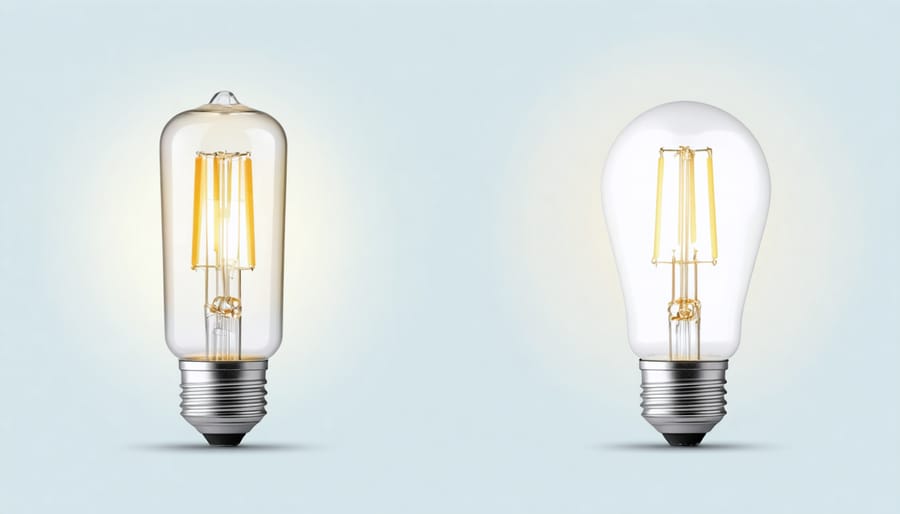
Energy-Efficient Appliances
Choosing energy-efficient appliances is one of the most impactful ways to reduce your home’s energy consumption and maximize your solar power investment. Modern ENERGY STAR certified appliances typically use 10-50% less energy than their conventional counterparts, leading to significant savings on your utility bills.
When shopping for new appliances, pay close attention to the EnergyGuide label, which shows the annual energy consumption and operating costs. While energy-efficient models may cost more upfront, they often pay for themselves through reduced energy bills within a few years.
Key appliances to prioritize for energy efficiency include:
– Refrigerators and freezers, which run continuously
– Washing machines and dryers, which are heavy energy users
– Dishwashers, especially those with energy-saving cycles
– HVAC systems and water heaters
To maximize efficiency with your appliances:
– Run full loads in washers and dishwashers
– Use cold water settings when possible
– Clean or replace filters regularly
– Schedule maintenance to maintain peak performance
– Enable power-saving modes
– Consider smart appliances that can automatically run during off-peak hours
Remember that the best time to upgrade to energy-efficient appliances is when your existing ones are nearing the end of their lifespan or showing signs of inefficiency. This ensures you get the maximum return on your investment while contributing to a more sustainable future.
HVAC System Optimization
Your HVAC system can make or break your home’s energy efficiency, accounting for up to 50% of your energy consumption. Optimizing this crucial system starts with regular maintenance – replacing filters monthly and scheduling professional tune-ups twice yearly keeps your system running at peak efficiency.
Consider upgrading to a smart thermostat, which can automatically adjust temperatures based on your daily routines and save up to 10% on heating and cooling costs. These devices learn your preferences over time and can be controlled remotely through your smartphone.
Proper insulation and sealing are essential partners to an efficient HVAC system. Check for and seal any air leaks around windows, doors, and ductwork. Speaking of ducts, having them professionally cleaned and sealed can improve your system’s efficiency by up to 20%.
If your HVAC system is over 10 years old, upgrading to a high-efficiency model could significantly reduce your energy bills. Look for ENERGY STAR certified units, which use up to 20% less energy than standard models. When selecting a new system, ensure it’s properly sized for your home – an oversized or undersized unit wastes energy and reduces comfort.
Zone heating and cooling can also optimize your HVAC system by allowing you to heat or cool only the rooms you’re using. This targeted approach can lead to substantial energy savings while maintaining comfort where it matters most.
Making your home more energy efficient is a smart investment that pays dividends in multiple ways. Not only will you see immediate reductions in your monthly utility bills, but you’ll also increase your home’s value and contribute to a more sustainable future. When combined with the environmental benefits of solar power, these improvements create a comprehensive approach to sustainable living that benefits both your wallet and the planet.
The energy efficiency improvements we’ve discussed are accessible to homeowners at various budget levels, from simple DIY projects like weatherstripping and LED lighting upgrades to more substantial investments in smart home technology and high-efficiency appliances. Each upgrade you make compounds the savings and benefits, creating a more comfortable, efficient living space while reducing your carbon footprint.
Remember that you don’t need to implement all these improvements at once. Start with the most cost-effective solutions that address your home’s specific needs, and gradually work your way through other upgrades as your budget allows. Many utility companies offer rebates and incentives for energy-efficient improvements, and various financing options are available to help make these upgrades more affordable.
Take the first step today by conducting a home energy audit or implementing some of the simpler improvements we’ve discussed. The sooner you begin your energy efficiency journey, the sooner you’ll start enjoying lower energy bills and a more comfortable home. With rising energy costs and increasing environmental concerns, there’s never been a better time to invest in making your home more energy efficient.
By taking action now, you’re not just improving your home’s performance – you’re making a wise investment in your future while contributing to a more sustainable world for generations to come.

